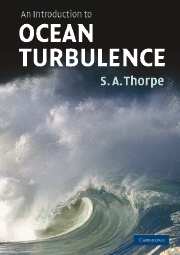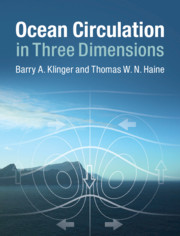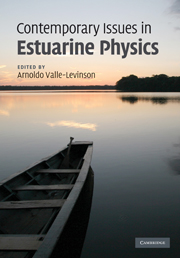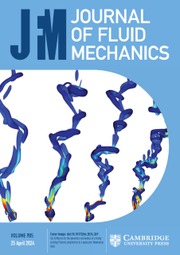An Introduction to Ocean Turbulence
This textbook provides an introduction to turbulent motion occurring naturally in the ocean on scales ranging from millimetres to hundreds of kilometres. It describes turbulence in the mixed boundary layers at the sea surface and seabed, turbulent motion in the density-stratified water between, and the energy sources that support and sustain ocean mixing. Little prior knowledge of physical oceanography is assumed. The text is supported by numerous figures, extensive further reading lists, and more than 50 exercises that are graded in difficulty. Detailed solutions to the exercises are available to instructors online at www.cambridge.org/9780521859486. This textbook is intended for undergraduate courses in physical oceanography, and all students interested in multidisciplinary aspects of how the ocean works, from the shoreline to the deep abyssal plains. It also forms a useful lead-in to the author's more advanced graduate textbook, The Turbulent Ocean (Cambridge University Press, 2005).
- Contains numerous illustrations with detailed explanatory captions
- Provides suggestions for further study to allow readers to probe further into more advanced aspects
- Contains problems, graded in difficulty with online solutions, which will allow readers to expand and monitor their understanding and to develop analytical techniques
Reviews & endorsements
'An Introduction to Ocean Turbulence by Steve Thorpe is the first book addressing the needs of instructors teaching introductory courses in ocean mixing. After initial explanations of turbulence fundamentals and techniques for measuring it in the ocean, the emphasis shifts to the processes producing the turbulence and how they in turn are generated and drive dissipation, diapycnal fluxes and dispersion. Copious illustrations from journal articles tie these discussions to current research and give students a clear path to reading current literature. By focusing on the energetics of ocean mixing, the final chapter puts the discussion into a global context. With this book, Professor Thorpe provides an invaluable aide to anyone teaching courses about ocean mixing to advanced undergraduates and graduate students, and I recommend it wholeheartedly.' Professor Michael Gregg, University of Washington
'Mathematical complexity is avoided … Thus, young … students are allowed to absorb and understand essential ocean physics and the methods used to observe and measure turbulence in the oceans. Unlike other textbooks focusing on mathematical formulism and turbulence modelling, readership and usage of this introductory book shall be broad in marine science.' Environmental Earth Sciences
Product details
October 2007Paperback
9780521676809
264 pages
248 × 174 × 15 mm
0.534kg
100 b/w illus.
Available
Table of Contents
- 1. Turbulence, heat and waves
- 2. Measurement of ocean turbulence
- 3. Turbulence in oceanic boundary layers
- 4. Turbulence in the ocean pycnocline
- 5. Turbulence dispersion
- 6. The energetics of ocean mixing
- Appendices
- References
- Index.









